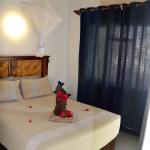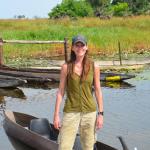© 2011 Sabrina Swenson. All Rights Reserved.
Botswana
November, 2015
Arriving into Maun, Botswana, I found myself at the gateway to the Okavango Delta. The Okavango is a very large inland delta, formed with the floodwaters from the summer rains. When the seasonal waters flow from Angola into Botswana's vast flatlands, they spread. They continue to spread until the worlds largest inland delta is formed. At 6,000 square miles, it's larger than Connecticut!
The Okavango River travels from the Angolan highlands, crosses into Botswana and then later spills over the vast, fan-shaped Delta. Just as the waters from Botswana’s summer rains disappear (April, May), so the floodwaters begin their journey 807 miles away. Running through the Kalahari sands, it brings to life a vast, diverse ecosystem of plant and animal life. The water’s flow, distribution and drainage patterns are continually changing, mostly due to tectonic activity underground. As an extension of Africa’s Great Rift Valley, the Okavango is set within a geographically unstable area of faults and regularly experiences land movements, tremors and minor quakes. By the time the water reaches Maun, at the Delta’s southern fringes, its volume is a fraction of what it was. As little as two to three percent of the water reaches Maun, over ninety-five percent lost to evaporation and the arid sand.
I found a funky place to stay in Maun; the Okavango River Lodge and smiled as I walked into the open reception/restaurant/bar area. It's exactly the kind of place I like to stay. It's local, situated along a river (although not swimmer friendly due to crocodiles) and has huts as rooms. My thatch roofed hut was adorable. My only complaint was without air conditioning and given the fact I was in the Kalahari desert, the fan on the ceiling was woefully inadequate to keep me cool. That and the fact that the hot water was brown, other than those two things, it was adorable.
I booked a trip to Moremi Game Reserve nearby and waited for my driver at the pre-crack of dawn. It was a few hours drive to the Reserve and in our land rover, we bounced along the dirt and sand road. We arrived at the entrance to the reserve and had to check in before entering. Since Moremi is so vast, they log everyone coming in to make sure everyone is accounted for at the end of each day. After checking in we had a simple breakfast my guide had brought along of cereal and coffee. We continued into the park and our first sighting was that of a spotted hyena. It was napping. We drove up very close and it woke with the sound of the land rover. He got to all fours and just stared at me as I snapped away. For its size, the spotted hyena has one of the most powerfully built skulls among the Carnivora. Combined with large jaw muscles and a special vaulting to protect the skull against large forces, these give the spotted hyena a powerful bite which can exert pressure 40% more force than a leopard can generate. The jaws outmatch those of a brown bear in bone crushing ability! We continued along and saw many zebra and giraffe. After much snapping of my camera and a few hours later, we stopped for lunch. I laughed when I saw the lunch my guide had brought along. It was Kentucky Fried Chicken! And so, we sat in the open land rover, in the middle of the Kalahari desert munching on four hour old KFC.
We eventually were on our way again and came across a truck with a huge cage in the back. A large group of school children had been riding around the park in the vehicle when it got stuck in the sand. We tried to help pull them out. My guide secured a rope around their vehicle and connected it to ours. He then climbed in our land rover and pressed the gas pedal to the floor, alas, the big truck wouldn't budge. The tires continued to spin only burying deeper in the sand. The teachers accompanying the class asked if we had extra water and I gave them a couple bottles. I wondered why in the world you would bring around twenty-five kids into the Kalahari desert without adequate hydration! We gave up on the rescue and continued on radioing the location of the stranded vehicle.
Eventually we came to an elephant highway; a path well worn by elephants making their journey to a watering hole. We parked the vehicle and watched as elephant after elephant walked by headed for the water and some relief from the sun. Male, female and babies lumbered into the water spraying themselves. I got some of my best pictures at this watering hole. With the constant procession of pachyderms, it was much like celebrities coming down the red carpet at the Oscars one after another!
We eventually rolled on and came to another watering hole. This one had an assortment of animals including a nearby group of baboons. Monkeys are always a favorite of mine to watch and their antics always amuse me.
Although we had seen many types of animals we were still hunting for the elusive big cats. Numerous times we would stop and my guide would get out his binoculars to look across the open spaces for the felines to no avail. Finally, just before we were about to head back to Maun for the day, my guide was once again looking through his lens. As he scoped the landscape, with the binoculars still to his eyes he said "I think that's a female cheetah". I looked in the direction he was and thought "what in the world are you looking at!" He gave me the binoculars and pointed to a tree off in the distance. He told me to look under it. There, far, far away was what appeared to be a tiny feline head. I watched for a long time and finally saw it move. "I think you're right!" I said. The fact he picked out such a tiny head at such a great distance lends to the fact how great a tracker the guides are. He put the truck in gear and we were headed for the tree. Upon arrival we discovered it was indeed a female cheetah. In the blazing sun of the early afternoon, she was lying under a tree in the shade trying to stay cool. Having a fur coat in that kind of searing heat must be hell! She was panting heavily and didn't seam to mind the truck or my camera snapping at all. She couldn't be bothered to do anything other than pant. I got some fantastic pictures of this majestic animal as she lay there resting in the afternoon heat.
With the sighting of the cat, my day in Moremi National Park was now complete! We headed back to my lodge and I smiled the entire way enjoying yet another day spent with these beautiful creatures.
The following day I headed for the water and boarded a mokoro (canoe) for an eye level trip of the Okavango Delta. I was in the mokoro with a guide who stood the entire trip. Our only means of propulsion... his elbow grease! He stood at the front and used a long pole to propel us forward. It was a peaceful and excellent way to travel on the Delta. We had up close and personal views of all the animals. I got some great shots of nearby elephants.
The following morning I headed to the airport, not to depart, rather, to hop on a helicopter and see the magnificent Okavango Delta from the air. We took off, just my pilot and me and headed out over the vast area. With excellent visibility in a helicopter, we saw hippos in small lakes, although with their constant submerging, they were hard to photograph. We saw herds of water buffalo, zebra, elephants and gnu aka wildebeest. The water level in the Delta was a bit low while I was there are there were far more dry patches than usual. Regardless, it was great to see. An hour later and we were back on terra firm. My trip to the Delta now complete!


